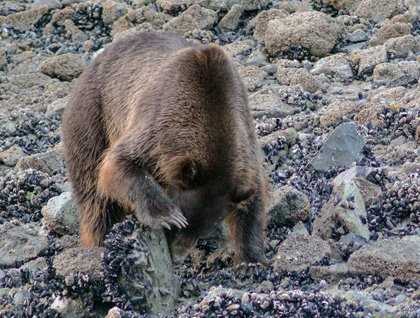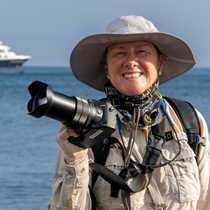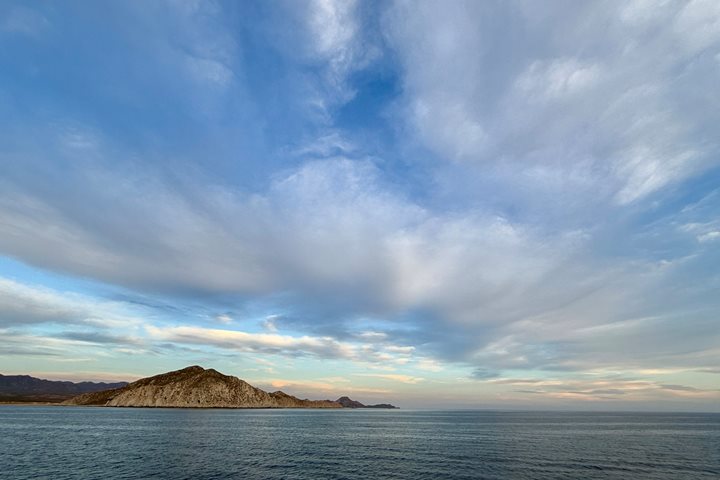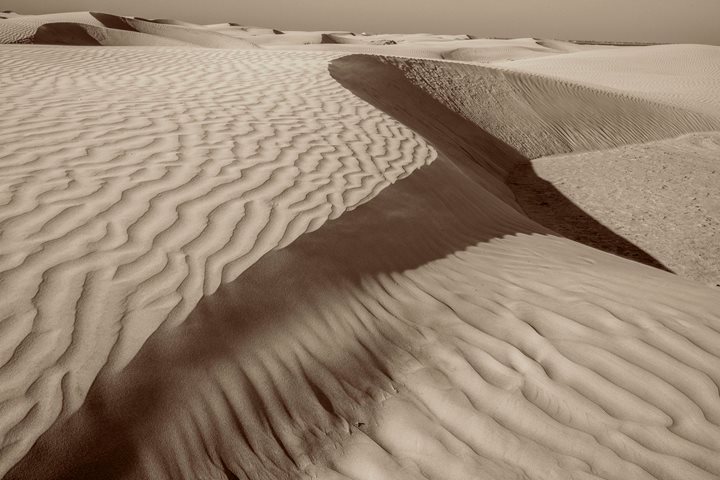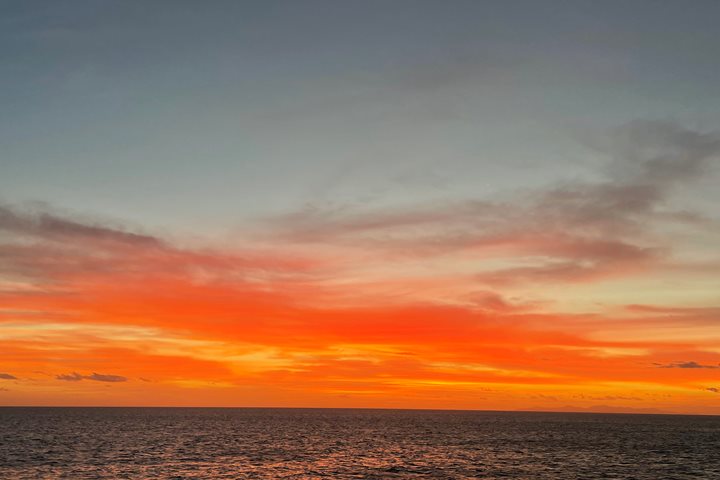Just as the day lightened enough to see, we found a brown bear in a salmon stream. How perfect could it get? By then we were deep inside Glacier Bay National Park, having picked up a ranger and cultural interpreter the night before in the town of Gustavus.
Quietly, quietly and gently (I tried), I made the call over the general announcement system that our first bear of the trip could be seen foraging up a salmon stream. Over the next hour, we found a total of six bears in the area as we sailed between Russell Island and the mainland; several single bears well-spaced apart, a female and her yearling cub, and one lone female traveling the shoreline of Russell Island. She was using her incredible shoulder muscles to overturn large rocks along the way, looking for marine invertebrates underneath, left vulnerable by a low tide. Meanwhile, the soft pink alpenglow on the snow-covered tops of the Fairweather mountain range changed to white as the sun rose higher.
By the time breakfast was over, the National Geographic Sea Lion was making her way into Johns Hopkins Inlet, celebrating a spectacular, sunny, Labor Day. The icebergs, bergy bits and growlers covered the surface of the sea, but the captain made our way steadily towards the face. There, we sat for well over an hour, and the payoff was worth every minute: we saw huge pieces fall off the glacier; entire seracs collapsed, and we listened to the sounds, both sharp and cracking as well as low and thunderous. Harbor seals calmly rode out the waves on their floes, as did we onboard, leaning on the rails while we drank hot cider with one hand, cameras ready in the other.
Later in the day came sightings of mountain goats, a nanny and kid, grazing the steep cliff sides of Gloomy Knob. We collectively held our breaths when the kid slipped and fell a few feet down a ravine. Tufted puffins and surf scoters colored the water at the base of the cliff, as they did also off South Marble Island – a chaos of sound, smell and action. Glaucous-winged gulls, kittiwakes and steller sea lions dominated the airwaves, while the photographers found sea otters, more puffins and murres. Earlier we had diverted from our course as a result of a call from the bridge indicating they had found a pod of killer whales ahead. Beautiful! The satin-smooth water rippled, and then split with the tip of a tall, dark and very handsome six-foot dorsal fin. The low light of afternoon backlit the exhaled air on one side of the ship; on the other, “rainblows” appeared to our delight. This group appeared to be resident killer whales, and we counted at least fifteen individuals making their relaxed way into Geike Inlet where we finally left them to their own, private plans and turned the ship back on course. We took walks in the forest of Bartlett Cove after dinner, which ended in the dim twilight of the oncoming autumn of Southeast Alaska.

